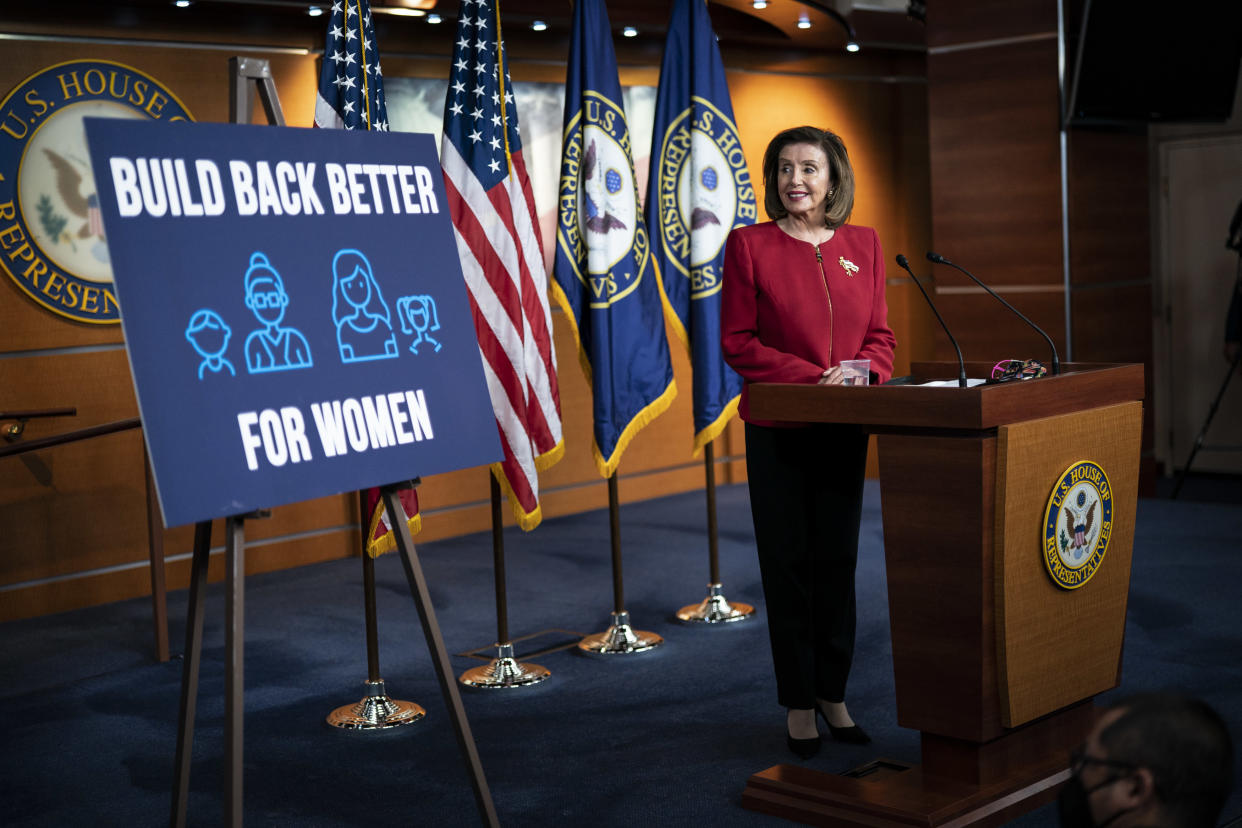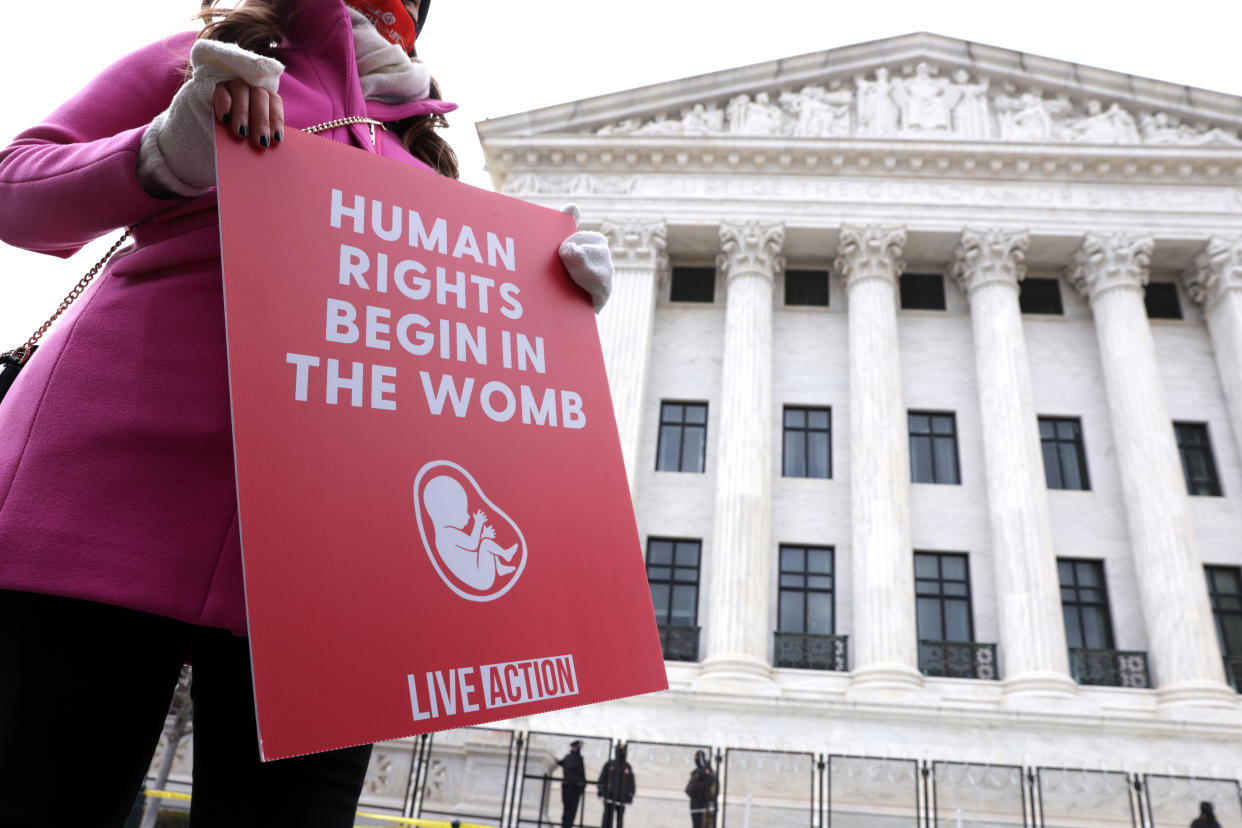With Roe v. Wade in jeopardy, abortion rights advocates plan a change in strategy

For half a century, the pro-abortion-rights movement in America has been confident that abortion would remain legal nationwide due to the Supreme Court’s 1973 ruling in Roe v. Wade.
But now that confidence is shaken. The Supreme Court’s recent decision to let a Texas law limiting abortion stand is a sign that the court very well could overturn Roe v. Wade next year in a Mississippi case, Dobbs v. Jackson Women’s Health Organization.
It’s a brave new world for those who believe abortion should remain legal for all Americans. If national legalized abortion is overturned by the current Supreme Court, it would create a system where it is mostly illegal in some states and broadly legal in others.

The question is, what comes next? Where should the pro-abortion-rights movement focus its energy?
The most immediate issue is the law in Texas that has essentially banned the practice as soon as medical professionals can detect a heartbeat, which is usually at around six weeks of pregnancy. The Justice Department on Thursday announced it was suing the Lone Star State. But it’s not clear how strong a case the federal government will have. On Thursday, Vice President Kamala Harris met at the White House with abortion rights advocates, many of whom are most focused right now on helping women in Texas get to other states, where they can legally have an abortion.
In Congress, House Speaker Nancy Pelosi has promised to pass a law this month that would codify abortion protections similar to those under Roe v. Wade into law.
But such a proposal will go nowhere in the U.S. Senate as long as the filibuster is in place, requiring any controversial bill to gain 60 votes to pass. And even if the filibuster were not in place, not all Democrats would vote for such a bill. Sen. Joe Manchin, D-W.Va., describes himself as pro-life.
The White House has also called for Congress to codify Roe v. Wade, although President Biden — a Catholic who has said he personally opposes abortion while supporting the right to choose — spent most of his long political career advertising himself as a moderate on the issue.
Those who understand the political reality know the pro-abortion-rights future looks dim in the courts, in Congress and at the state level in much of the country. This is in large part because the Republican Party made a concerted effort to control state legislatures starting over a decade ago.
“It’s a tough reality that we are going to have to deal with. There’s not going to be tons of quick fixes. That’s just the reality of it,” Lala Wu, co-founder and executive director of Sister District, a progressive nonprofit launched in 2016 to focus on helping Democrats win elections in state legislatures, told Yahoo News.

And so, just as it has with Wu’s organization, the focus of many Democrats and pro-abortion-rights organizations is beginning to shift to the state level — not only as a way to preserve abortion rights in some states, but also as a path to power at the national level that Republicans have utilized and Democrats have neglected.
“It’s well documented that earlier in the past decade there was not the emphasis on state and local elections that there needed to be from the broader progressive movement, despite the intense warning signs given by people on the ground — largely women of color — who were bearing the brunt of the attacks,” Sam Lau, a spokesman for Planned Parenthood Federation of America, told Yahoo News. “The anti-abortion movement has attacked abortion with a layer-by-layer strategy, with a very long-term strategy. There is no magic wand.”
The structural roots of the pro-abortion-rights movement’s losses are the same as they are for many other issues important to Democrats. Republicans have dominated the battle for control of state legislatures over the past decade, starting with the 2010 elections. At a time when Democrats were riding high after the election of President Barack Obama in 2008, top Republican operatives targeted state legislatures.
“Definitely, the [Republican] play has been largely on the state legislatures. And I think our vehicle at the time had been the courts,” Planned Parenthood president and CEO Alexis McGill Johnson told the New York Times almost a year ago.

Prior to 2010, Democrats controlled 27 state legislatures, and had full control of the state government — meaning they had the trifecta of both chambers of the legislature and the governorship — in 16 states. Republicans, prior to 2010, controlled only 14 state legislatures, and had trifectas in just nine.
But in the fall of 2010, while most national attention focused on Republicans retaking the House of Representatives in Congress, there was a subterranean earthquake at the state level. Republicans flipped around 680 seats in state legislatures around the country that had been held by Democrats (there are just over 7,300 seats in all statehouses in total), and when all the dust had settled, Republicans then controlled 26 state legislatures, and had trifectas in 21 states. Democrats were down to 17 legislature majorities and just 11 trifectas.
The control of state legislatures gave Republicans the ability to do numerous things that affected national political issues. It gave them far greater control of the once-a-decade redistricting process, in which each state redraws the maps for its congressional seats and its state legislature districts. This allowed the GOP to cement its majority in the House and its control of state legislatures. To this day Republicans are dominant at the state level, with a 30-to-18 advantage in controlling state legislatures, and 23 trifectas to the Democrats’ 15.
This pronounced Republican advantage has given the GOP the ability to pass numerous restrictions on abortion in state legislatures, which mostly went unnoticed in the national conversation.

So while the Supreme Court routinely upheld the right to abortion broadly at the national level over the past two decades, Republicans continued to chip away at access in Republican-controlled states, and they also continued to implement a long-term strategy of remaking the federal judiciary. This plan of attack was spearheaded by the Federalist Society — a powerful association of conservative lawyers and legal scholars — and resulted in an overhaul of federal appeals courts during the Trump presidency. Donald Trump appointed 226 federal judges in one four-year term, a rapid pace compared to the previous three presidents, who all appointed between 320 and 367 judges in eight years.
Trump appointed 54 federal appeals court judges compared to Obama’s 55. There are 13 appeals courts, and they “have the final word on most legal appeals around the country,” according to the Pew Research Center. And then of course Trump appointed three Supreme Court justices, moving the court firmly into a 5-4 conservative majority that has also taken shape as a 6-3 majority on issues such as restricting voting rights.
Interestingly, abortion rates had fallen by last year to the lowest level ever since Roe v. Wade was decided in 1973 — and were in fact lower than before the ruling. But it’s noteworthy that the reductions in abortion rates were not limited to Republican-controlled states, but were spread broadly across red and blue states. Liberal states like California and New York were among the majority of states that saw reduced abortion rates during the Obama presidency.

But when it comes to Democrats being able to build power structures that have long-term impact, the consequences of the party’s lack of focus on state politics during the Obama era means it will take them a while to move the needle.
“Democrats are catching up when it comes to infrastructure,” Wu said. “It’s been decades of this kind of scheming [by Republicans].”
Planned Parenthood’s McGill Johnson has been talking about this approach for a while now, well before the Texas law.
“I think that the progress that conservatives have made over the last 10 years, in terms of capturing courts, state legislatures on a bunch of issues that are really not in line with where the majority of the populations are even in their own state, have a lot to do with their understanding of how to change the world to maximize power,” McGill Johnson said late last year.
“And while we’ve been very issue-focused and very ideologically focused, it hasn’t always matched the kind of power-building structural focus. And that’s where I think the shift will happen,” she said.
____
Read more from Yahoo News:
